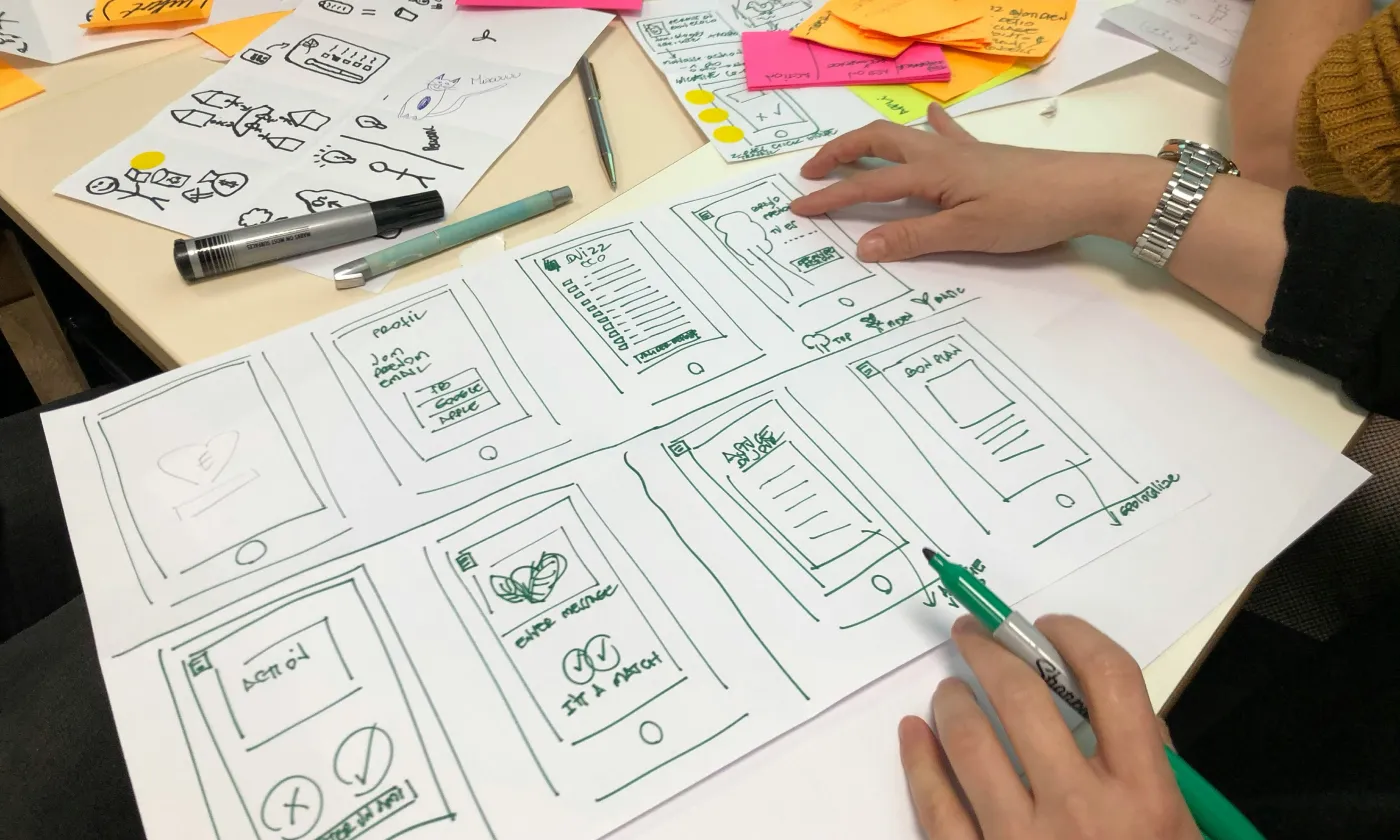
У нашій попередній статті ми торкнулися теми функціональності та зручності використання як основних аспектів UX для туристичного веб-сайту. Цього разу звернемо увагу на контент туристичного сайту з точки зору UX. Оскільки існує зростаюча тенденція ставити акцент не лише на професійних текстах, зображеннях чи відео, а й на так званому контенті, створеному користувачами, ми розглянемо обидва ці аспекти.
Професійна перспектива: розпалюйте уяву
Якісний контент додає цінності як з точки зору залучення клієнтів, так і SEO. Він робить ваш веб-сайт професійним і надійним. І це є величезним фактором, що впливає на прийняття рішення про покупку. Як і всі елементи вашого сайту, контент повинен бути не лише переконливим і функціональним, але й зручним для користувачів. Давайте розглянемо, що це означає.
Текст. Добрий текст додає цінності. Варто розглядати ваш веб-сайт як таке місце, що пропонує безперервний досвід, а не ізольовані сторінки контенту. Організуйте контент так, щоб сторінки природно вели одна до одної, заохочуючи користувачів продовжувати дослідження або натискати. Але не робіть сайт занадто насиченим текстом. Залиште простір для мрій і візуалізації. Короткі блоки з стиснутою інформацією та натхненними закликами до дії працюють найкраще. Ось як це робить Outlines:
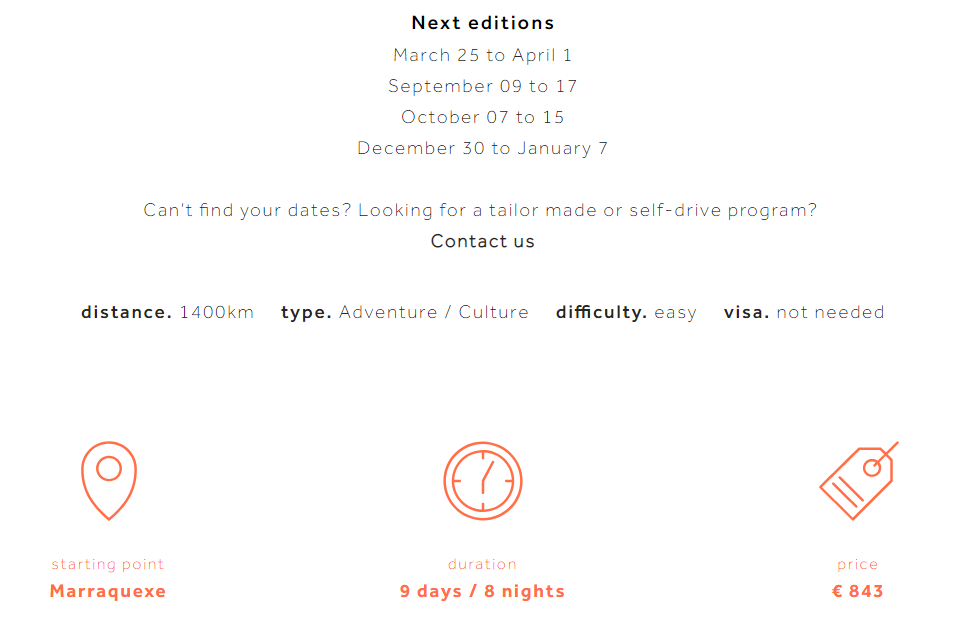
Фотографії. Прагнення користувачів до нових вражень підсилюється привабливими зображеннями. Але фотографії не лише радують — вони допомагають користувачам швидше і легше знаходити те, що вони шукають. Ось кілька порад, які варто пам'ятати при впровадженні фотографій на ваш сайт. Клієнти віддають перевагу великим, якісним зображенням, як на сайтах Airbnb або Kayak. Це не обов'язково повинні бути зношені зображення традиційних туристичних місць, таких як Ейфелева вежа в Парижі або Христос-Спаситель у Ріо-де-Жанейро. Використовуйте несподівані аналогії і створюйте особливу атмосферу, як це роблять Bouteco або Secret Escapes:
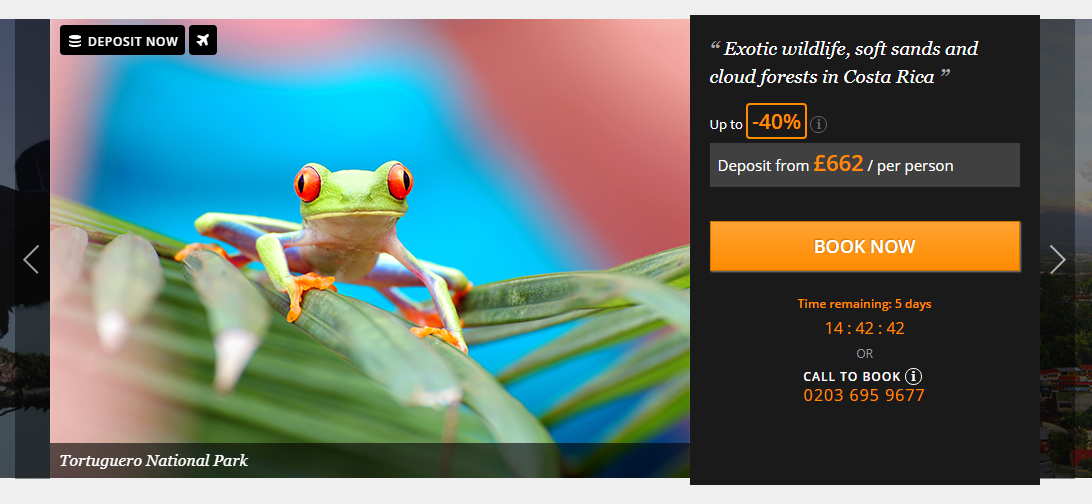
Відео. Професійні відео також додають цінності вашому туристичному веб-сайту. Деякі сайти, такі як Geobeats.com, навіть використовують відео як основне джерело інформації про туристичні напрямки. З останніх тенденцій, відео на 360 градусів є найвражаючими. Ви можете перевірити, як чудово Visit Idaho використовує як відео на 360 градусів, так і традиційні відео для залучення клієнтів:
Контент, створений користувачами: соціальне підтвердження
Просто подумайте про цифри: 95% споживачів повідомляють, що читають відгуки перед бронюванням туру. Люди витрачають більше половини години на читання відгуків і читають до 20 з них на етапі планування своєї подорожі. Коментарі та відгуки підвищують довіру і допомагають людям подолати невизначеність і розчарування при прийнятті дорогого рішення. Це підтверджує, наскільки важливі відгуки для веб-сайту вашої туристичної агенції.
Стислий огляд відгуків. Дослідження показали, що люди надають перевагу перегляду спочатку стислих оглядів, а не повних текстів. Це допомагає швидко отримати всю необхідну інформацію одним поглядом. Тренд ще більш виражений для мобільних пристроїв через обмежений простір. Фільтрація за відгуками є додатковою перевагою, яка з одного боку забезпечує прозорість, а з іншого — створює здорову конкуренцію. Тут Tripadvisor і Booking.com є беззаперечними лідерами серед інтернет-користувачів:
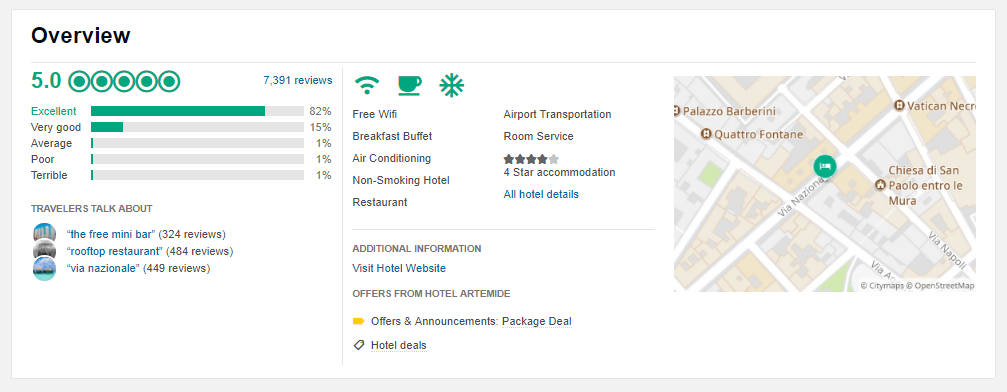
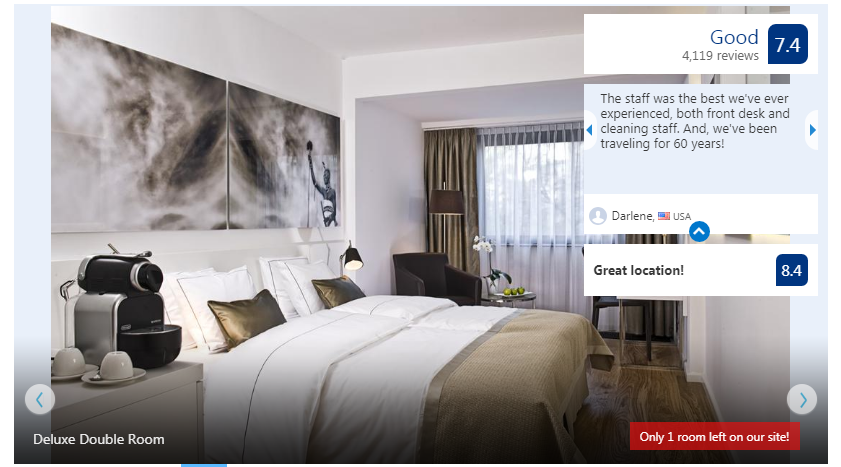
Уважно розгляньте форму для відгуків, щоб отримати їх структурованими з самого початку та залучити користувачів, які не люблять писати довгі тексти:
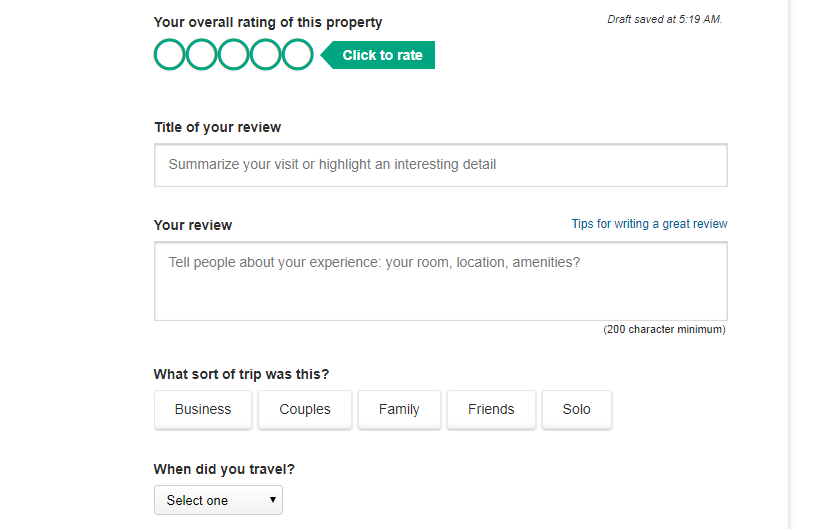
Використовуйте варіанти відповідей для отримання цінності, не завантажуючи ваших клієнтів надмірними запитаннями:

Інтеграція відгуків сторонніх джерел. Використовуйте API (наприклад, TripAdvisor) для інтеграції відгуків сторонніх джерел на вашому сайті. Наприклад, Hotels.com не лише інтегрував відгуки TripAdvisor зі своїми власними відгуками клієнтів, але й підкреслив оголошення, які були улюблені іншими користувачами:

Фото та відео користувачів. Пам'ятайте, що відгуки не обов'язково повинні бути текстовими. 89% мандрівників повідомляють, що дивляться відео про подорожі, тоді як 45% відпочивальників та 72% ділових мандрівників зазначили, що їх спонукали забронювати поїздки після перегляду відео. Особливо це стосується молодшого покоління, яке більше покладається на зображення та відео, ніж на текст. TripAdvisor використовує цю тенденцію, активно додаючи високоякісні зображення, створені користувачами, на свій сайт. Окрім формування довіри, це запрошує користувачів стати активними учасниками бренду, що є найкращим способом формування лояльності до бренду. А такі сайти, як FivePointFive, навіть акцентують увагу на відео-відгуках, заохочуючи людей до дій:
Висновок
Організація контенту є важливим складником UX сайту подорожей. Як професійний, так і контент, створений користувачами, заслуговують на вашу увагу та цілеспрямоване заповнення. Добре структуровані, високоякісні та змістовні тексти, зображення та відео приваблюють людей з різними типами сприйняття та допомагають їм ухвалити рішення щодо варіанту подорожі, який вони, ймовірно, придбають на вашому сайті.
Потрібна професійна порада щодо того, як зробити сайт вашого туристичного агентства більш зручним для користувачів? Напишіть нам — і ми з радістю надамо наш досвід у розробці IT для туризму та гостинності.

